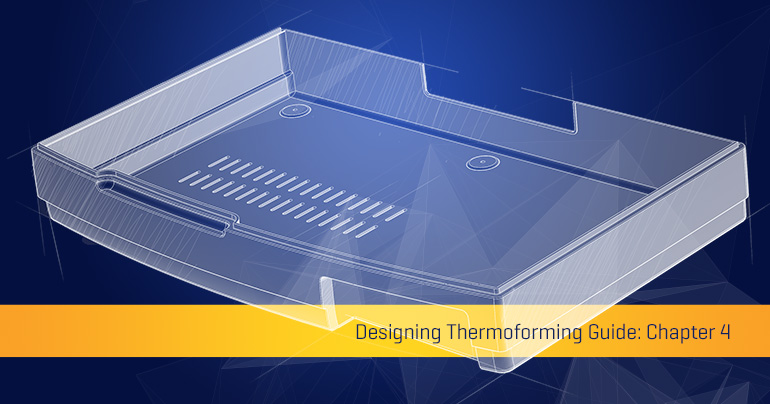This is the fourth post in our series from our Thermoforming Handbook, a guide that, until now, was only available to our customers and partners. We’re releasing the whole thing in a series of posts right here on our blog.
We’ve previously released:
- Chapter 1: An Overview of Thermoforming
- Chapter 2: Designing for Thermoforming
- Chapter 3: Tooling, The Foundation of Thermoforming
If you’re someone who uses custom plastic manufacturing professionally and you’re interested in getting your own copy, just send us a message and we’ll be happy to send you one. As always, these are general guidelines. Any project or design needs to be reviewed by a qualified thermoforming professional before it goes into production, and the sooner you get one of those qualified professionals involved in the process, the smoother things tend to go. If you’re looking for a qualified professional, we know a few who would be happy to help.
Much like snowflakes, every thermoforming material is unique. Unlike snowflakes, thermoforming materials won’t melt the minute you touch them; and the differences don’t end there.
Common Materials & Applications
| Material | Description | Sample Applications |
|---|---|---|
| ABS | One of the most widely used thermoplastic materials due to its impact strength, rigidity and abrasion resistance. ABS material has good chemical resistance, works well in high temperature and is moisture-resistant. |
|
| Acrylic | Combines clarity, weatherability and impact strength. |
|
| PETG | A transparent copolyester with high-impact strength and chemical-resistant properties. |
|
| Polycarbonate | Versatile, tough and well suited for a variety of demanding and high heat applications. |
|
| Polyethylene | A highly versatile material with high impact, rigidity, excellent flexibility and outstanding chemical resistance. |
|
| PVC/ABS | Used for applications where fire-rated sheet is required. The combination of PVC and ABS provides very high-impact strength with excellent ductility and formability. |
|
| PVC/Acrylic | Used for applications where fire-rated sheet is required. The combination of PVC and acrylic provides very high-impact strength and formability with a greater resistance to a broad range of corrosive chemicals and cleaning solutions. |
|
| TPO | Used for interior and exterior applications requiring low temperature toughness and dimensional stability. This material has excellent chemical resistance and can be manufactured with UV stabilizers. |
|
Molding in Color
To paint or not to paint? That is the question. Well, at least it’s a question you can answer yourself when you’re thermoforming.
- Thermoforming materials are available in 1000s of colors.
- Thermoformed parts look great right out of the mold and don’t require paint.
- Thermoformed parts can be painted to achieve a specific look.
Too Many Options? We Can Help.
We’ve been doing this for nearly 70 years, and we’d be happy to lend our experience to your project. If you’re not sure what material is right for your project, we’d be happy to help or even give a second opinion. And even if we don’t have the answer, we have the relationships in place to get the answers you need.
Why not send us a message, and we can find the right material match for your next project.
